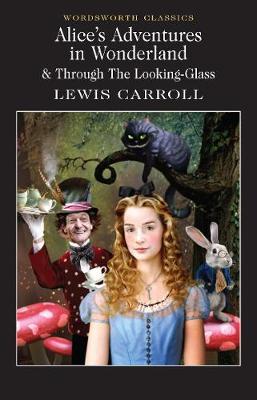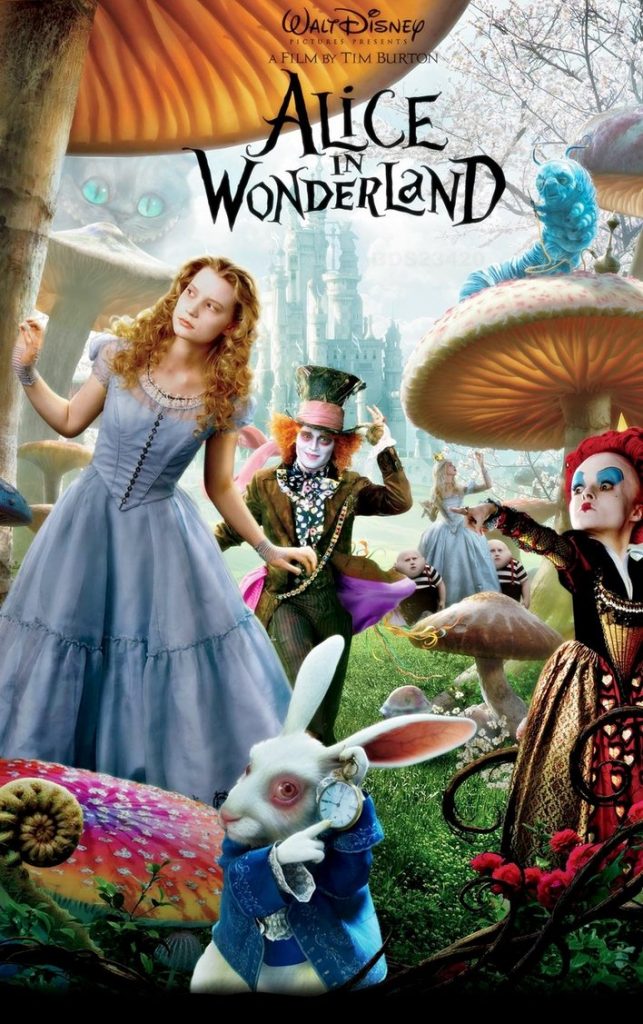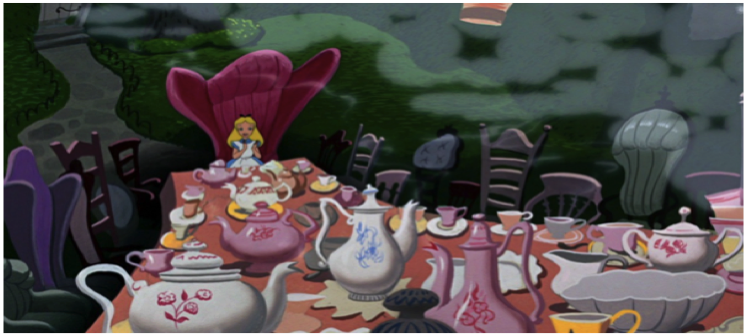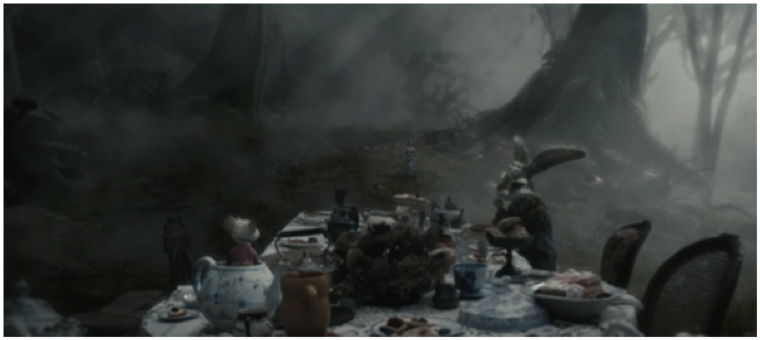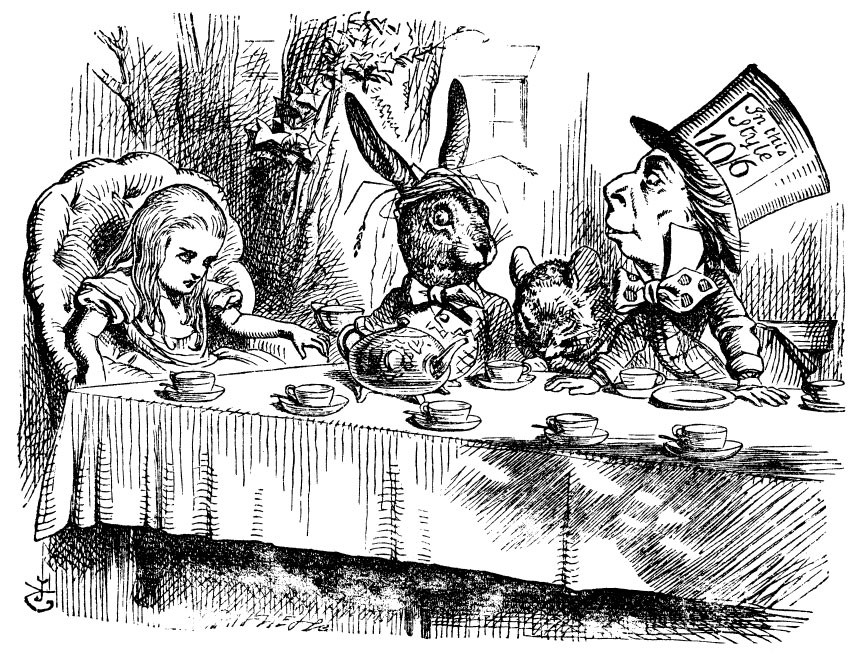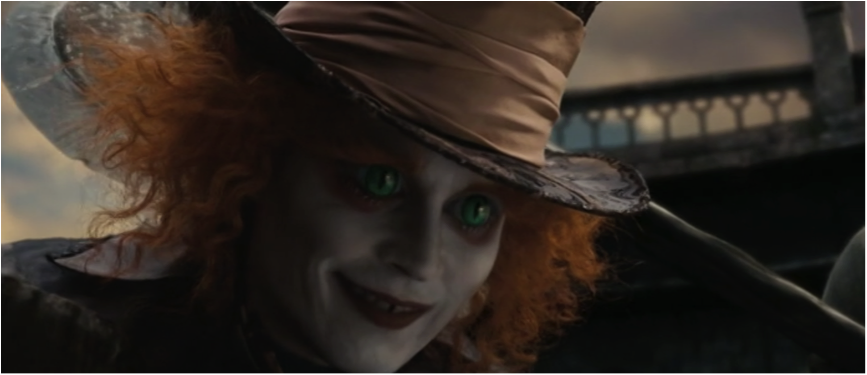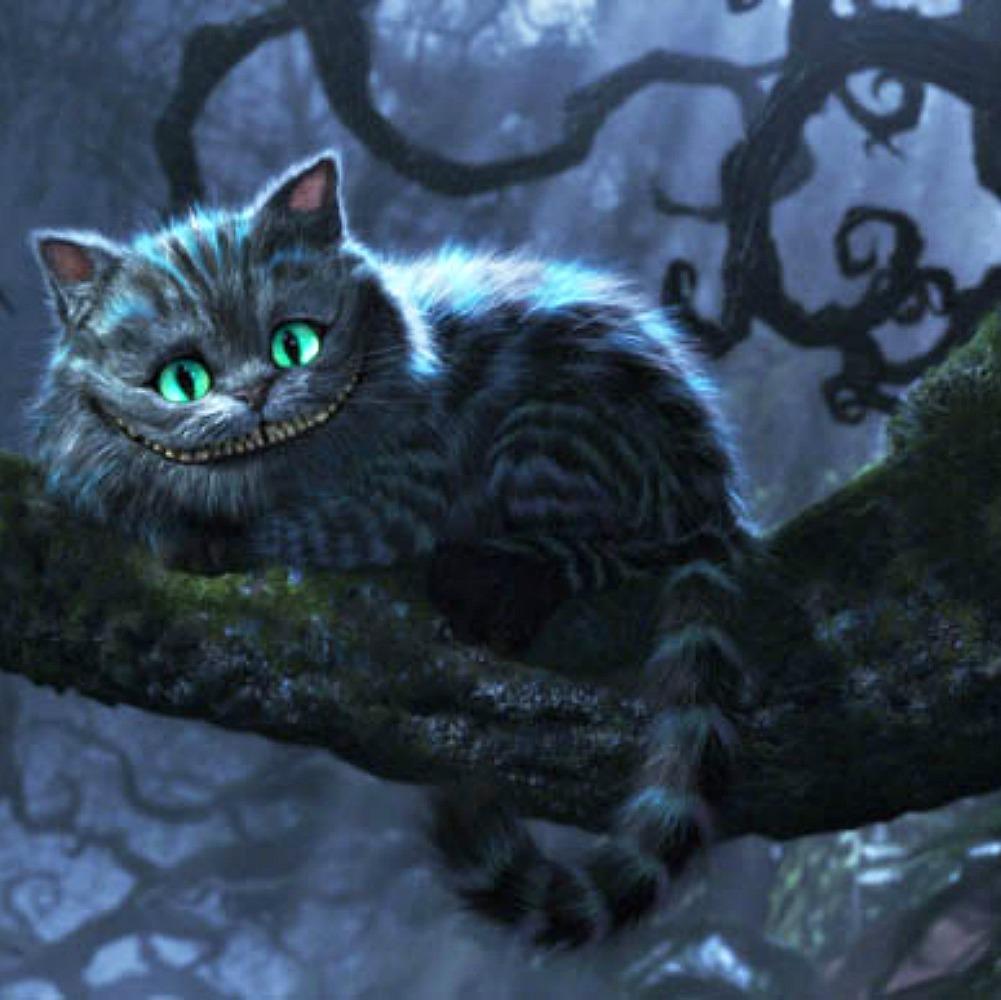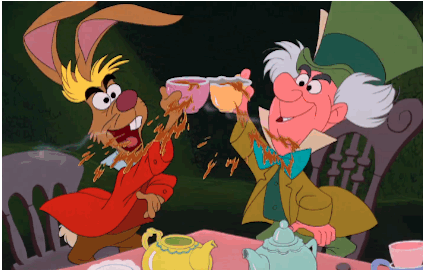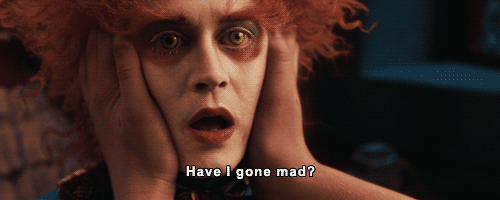The film draws on the viewer’s knowledge of the Disney original in the tea party scene, making it a ruin of what it once was, and presenting the Hatter as even more ‘mad’. He is seen for the first time in a close up shot, slowly looking up towards the camera, vacantly staring into the lens. His gaze mirrors the fixed, but emotionless, stare that is often attributed to animals. The camera cuts to a perspective shot of the table as Alice enters, recapturing the Disney scene to introduce the well-known sphere in which animals and humans interact. The angle of this shot makes Alice appear much smaller than the March Hare and Dormouse, marginalising the human presence and emphasising her shrunken size against the animals. This difference in size is representative of the influences of humans and animals on the Hatter’s life; as Alice physically grows throughout the film, the Hatter’s madness and animal instincts begin to subside. The human interactions that the Hatter has with Alice are shown to have a positive influence on his character, contrasting the gloomy world he inhabits with his animal companions. Alice is able to calm the Hatter, making him more human, while his animalistic tendencies make him frantic and ‘mad’.
The scene uses a drastically different colour palette, replacing the gay pink tones with grey and mist, accompanied by crackling gramophone music, which ages the scene, giving the impression that the Hatter has waited the 55 year gap between the films in the same spot, while all decays around him. His madness is shown through his disregard for human etiquette, as he walks straight down the middle of the table, breaking teapots as he goes. His animality is evident in his failure to adhere to the social rules of the setting. The tea party is a particularly ‘human’ setting, and the presence of the March Hare and the Dormouse sat at the table transgress the ‘human’ activity, adding to its overall madness. The famous scene from Carroll’s novel is immensely troubled by the anthropomorphism of the animals, and as it is so well known it carries the ‘baggage’ of its previous representations; it has become a recognisable space for nonsensical overlaps in human/animal relations.
The Hatter contrasts the dark tones of the scene, bringing colour through his orange hair and inhuman green eyes. His cat-like eyes parallel him with the Cheshire Cat; this similarity is played with during the execution scene, as the shape-shifting cat takes the form of the Hatter with the only clue being in his enlarged, animated eyes. The Hatter’s appearance reflects the animation of the animal characters: he is made up of blocks of colour, which contrast Alice’s natural human colouring. The Hatter is therefore caught between the human and animal as he borders animation and live action, madness and sanity.
Alice continually fears ‘going round the bend’ throughout the film, and through this meeting with the Hatter, the viewer is made to connect madness with the ‘curiouser and curiouser’ disturbing presence of animals occupying ‘human’ spaces.
